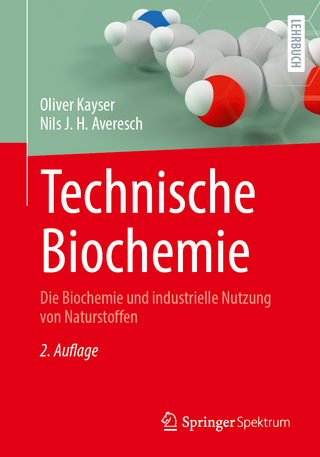
Protein Sequencing Protocols
Humana Press Inc. (Verlag)
978-1-61737-284-1 (ISBN)
Determination of the protein sequence is as important today as it was a half century ago, even though the techniques and purposes have changed over time. Mass spectrometry has continued its recent rapid development to find notable application in the characterization of small amounts of protein, for example, in the field of proteomics. The “traditional” chemical N-terminal sequencing is still of great value in quality assurance of the increasing number of biopharmaceuticals that are to be found in the clinic, checking processing events of recombinant proteins, and so on. It is joined in the armory of me- ods of protein analysis by such techniques as C-terminal sequencing and amino acid analysis. These methods are continually developing. The first edition of Protein Sequencing Protocols was a “snapshot” of methods in use in protein biochemistry laboratories at the time, and this, the second edition, is likewise. Methods have evolved in the intervening period, and the content of this book has similarly changed, the content of some chapters having been superceded and replaced by other approaches. Thus, in this edition, there is inclusion of approaches to validation of methods for quality assurance work, reflecting the current importance of biopharmaceuticals, and also a guide to further analysis of protein sequence information, acknowledging the importance of bioinformatics.
Strategies for Handling Polypeptides on a Micro-Scale.- SDS Polyacrylamide Gel Electrophoresis for N-Terminal Protein Sequencing.- Two-Dimensional Polyacrylamide Gel Electrophoresis for the Separation of Proteins for Chemical Characterization.- Electroblotting of Proteins from Polyacrylamide Gels for Chemical Characterization.- Enzymatic Cleavage of Proteins.- Chemical Cleavage of Polypeptides.- Enzymatic Preparation and Isolation of Glycopeptides.- Analytical and Micropreparative Capillary Electrophoresis of Peptides.- High-Performance Liquid Chromatography On-Line Derivative Spectroscopy for the Characterization of Peptides with Aromatic Amino Acid Residues.- Hydrolysis of Samples for Amino Acid Analysis.- Amino Acid Analysis.- Post Column Amino Acid Analysis.- Amino Acid Analysis Using Pre-Column Derivatization with 6-AminoquinolylN-Hydroxysuccinimidyl Carbamate.- Amino Acid Analysis in Protein Hydrolysates Using Anion Exchange Chromatography and IPAD Detection.- D-Amino Acid Analysis.- Validation of Amino Acid Analysis Methods.- Electrospray Mass Spectrometry of Peptides, Proteins, and Glycoproteins.- Peptide Mass Fingerprinting Using MALDI-TOF Mass Spectrometry.- Nanoelectrospray Tandem Mass Spectrometry and Sequence Similarity Searching for Identification of Proteins from Organisms with Unknown Genomes.- Direct Identification of Proteins in Ultracomplex Mixtures.- Identification of PTH-Amino Acids by HPLC.- Protein Sequencer Maintenance and Troubleshooting.- N-Terminal Protein Sequencing for Special Applications.- Identification of Phosphorylation Sites by Edman Degradation.- Validation of Protein Sequencing in a Regulated Laboratory.- Automated C-Terminal Protein Sequence Analysis Using the Alkylated-Thiohydantoin Method.- Chemical Modifications of Proteins as anAid to Sequence Analysis.- Deblocking of N-Terminally Modified Proteins.- Deblocking of Proteins Containing N-Terminal PyroglutamicAcid.- Identification of Sites of Glycosylation.- Analysis of Sites of Protein Phosphorylation.- Quantitation and Location of Disulfide Bonds in Proteins.- Getting the Most from Your Protein Sequence.- Letter Codes, Structures, Masses, and Derivatives of Amino Acids.- Protein Consensus Sequence Motifs.
| Erscheint lt. Verlag | 10.11.2010 |
|---|---|
| Reihe/Serie | Methods in Molecular Biology ; 211 |
| Zusatzinfo | XII, 493 p. |
| Verlagsort | Totowa, NJ |
| Sprache | englisch |
| Maße | 152 x 229 mm |
| Themenwelt | Naturwissenschaften ► Biologie ► Biochemie |
| ISBN-10 | 1-61737-284-6 / 1617372846 |
| ISBN-13 | 978-1-61737-284-1 / 9781617372841 |
| Zustand | Neuware |
| Haben Sie eine Frage zum Produkt? |
aus dem Bereich


